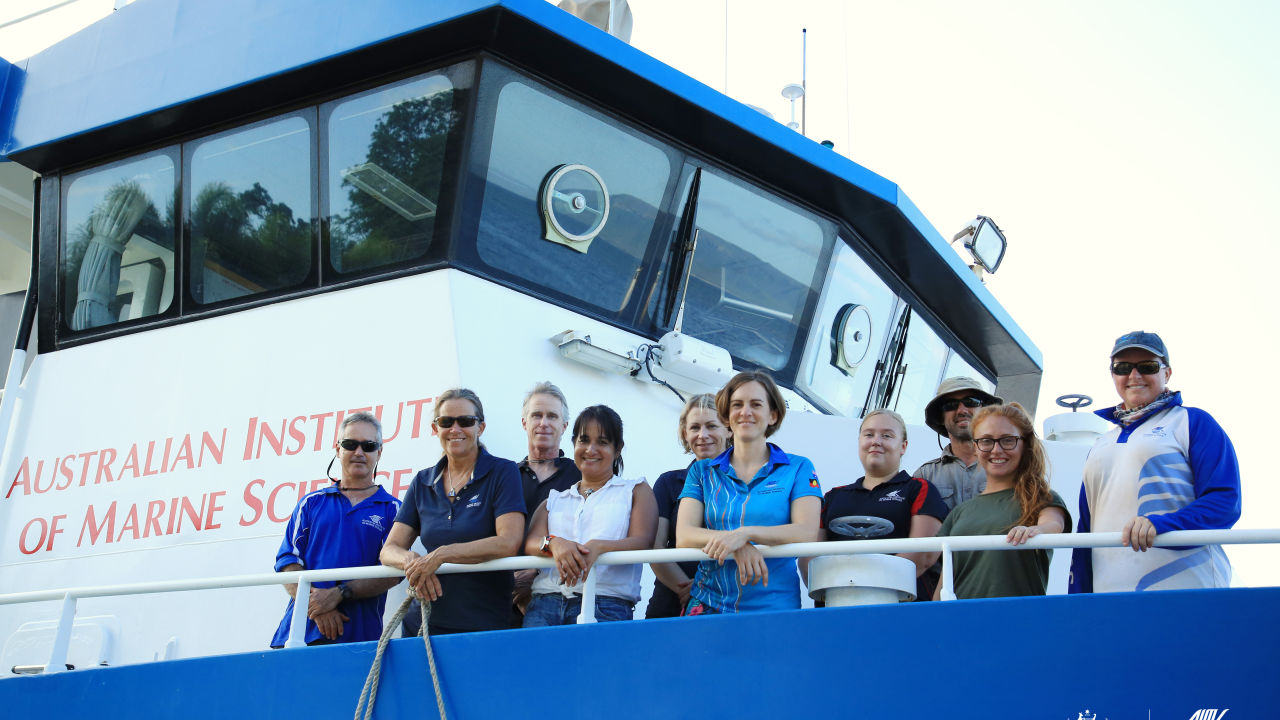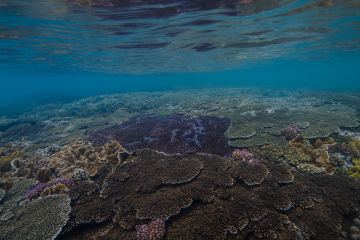Media Release ·
First Reef Trust Partnership funded project underway

A 25-day health check of remote far northern reefs being undertaken by the Australian Institute of Marine Science (AIMS) is the first Reef Trust Partnership funded project underway.
GBRF Managing Director Anna Marsden said the Foundation through the Reef Trust Partnership has invested over half a million dollars ($574,000) into a co-funded project led by an AIMS research team which will provide an updated baseline assessment of reef conditions and recovery in the remote northern section of the Great Barrier Reef.
“Reefs in the northern region of the Great Barrier Reef have not been extensively surveyed since late 2016 after a severe coral bleaching event affected the region meaning that the section is long overdue for a health check,” Ms Marsden said.
“We don’t currently know the extent of coral loss attributable to the latest bleaching in 2017 or of any other disturbances that have occurred in that time.
“The findings of this survey will be used to inform future monitoring and will help to guide the focus of resources of the Reef Restoration and Adaptation Science and the Crown of Thorns Starfish Control Components of the Reef Trust Partnership.
“This project would not be able to go ahead without the Australian Government’s single largest investment into the Reef through the Reef Trust Partnership, the Foundation looks forward to delivering on our objectives over the life of the Partnership.”
AIMS CEO Dr Paul Hardisty said with the potential for bleaching, he had mobilised the largest research vessel in the Institute’s fleet, to help better understand and preserve our national icon, which generates an estimated $6 billion for Australia and supports 64,000 local jobs.
“It is the first time our 34.9m West Australian-based RV Solander, with its specialised laboratories, flow-through aquariums, and high-tech computing and diving facilities for the 18 AIMS scientists and crew onboard, has visited Queensland waters,” Dr Hardisty said.
“This expedition is part of AIMS’ commitment to survey the current health of the Great Barrier Reef, as it has done every two years for the past 35 years.
“While the situation has eased, there is still the potential for warm sea temperatures to cause coral bleaching.”
Dr Hardisty said more than 20 reefs would be surveyed off Cape York, from Cooktown to north of Cape Grenville, to check for signs of recovery in young coral recruits, after the 2016 and 2017 coral bleaching.
He said the researchers would also be looking closely to see if surviving corals had developed increased tolerance to warmer waters, a good indication of the resilience of a reef.
As part of AIMS’ close ties with Traditional Owners, a Sea Ranger from the Cape York region is on board the RV Solander to advise on traditional knowledge of the area and is helping build closer monitoring partnerships for the future.
The project is funded by the Australian Government’s Reef Trust and the Great Barrier Reef Foundation through the Reef Trust Partnership with support from the National Environmental Science Program (NESP), with AIMS partners such as Great Barrier Reef Marine Park Authority utilising the long-term monitoring information gathered.
Media contact:
GBRF Sarah Henderson +61 429 890 087 | +61 3171 0403 | shenderson@barrierreef.org




